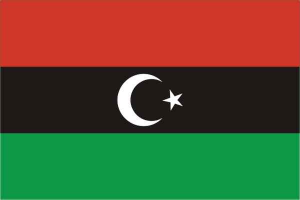Difference between revisions of "Language/Libyan-arabic/Grammar/How-to-Use-Be"
m (Quick edit) |
m (Quick edit) |
||
| Line 68: | Line 68: | ||
<hr>➡ If you have any questions, please ask them in the comments section below.<br>➡ Feel free to edit this wiki page if you think it can be improved. 😎 | <hr>➡ If you have any questions, please ask them in the comments section below.<br>➡ Feel free to edit this wiki page if you think it can be improved. 😎 | ||
==Related Lessons== | |||
* [[Language/Libyan-arabic/Grammar/Adjectives|Adjectives]] | |||
* [[Language/Libyan-arabic/Grammar/Pronouns|Pronouns]] | |||
* [[Language/Libyan-arabic/Grammar/Negation|Negation]] | |||
* [[Language/Libyan-arabic/Grammar/Conditional-Mood|Conditional Mood]] | |||
* [[Language/Libyan-arabic/Grammar/Give-your-Opinion|Give your Opinion]] | |||
* [[Language/Libyan-arabic/Grammar/Plurals|Plurals]] | |||
* [[Language/Libyan-arabic/Grammar/Questions|Questions]] | |||
* [[Language/Libyan-arabic/Grammar/Future-Tense|Future Tense]] | |||
{{Libyan-arabic-Page-Bottom}} | {{Libyan-arabic-Page-Bottom}} | ||
Revision as of 12:12, 1 March 2023
Hi Libyan Arabic learners! 😊
In this lesson, we will learn how to use the verb "be" in Libyan Arabic. We will look at the different forms of the verb and how to use them in sentences. We will also look at some examples of how to use the verb in context.
Introduction
The verb "be" is one of the most important verbs in any language. In Libyan Arabic, it is used to express existence, identity, location, and other states. It is also used to form questions and negative sentences.
Forms of the Verb
The verb "be" has two forms in Libyan Arabic: the present tense and the past tense. The present tense is used to express a current state or condition, while the past tense is used to express a past state or condition.
Present Tense
The present tense of the verb "be" is formed by adding the suffix "-na" to the verb stem. For example, the verb "to be" is "huna" in the present tense.
- Person 1: Huna? (What is it?)
- Person 2: Huna kalam. (It's a pen.)
Past Tense
The past tense of the verb "be" is formed by adding the suffix "-ta" to the verb stem. For example, the verb "to be" is "huta" in the past tense.
- Person 1: Huta? (What was it?)
- Person 2: Huta kalam. (It was a pen.)
Usage
The verb "be" can be used in a variety of ways in Libyan Arabic. Here are some examples of how to use the verb in sentences.
Existence
The verb "be" can be used to express existence. For example:
- Person 1: Huna shay? (What is there?)
- Person 2: Huna shay maktab. (There is a desk.)
Identity
The verb "be" can also be used to express identity. For example:
- Person 1: Huna shay? (What is it?)
- Person 2: Huna shay kalam. (It is a pen.)
Location
The verb "be" can also be used to express location. For example:
- Person 1: Huta shay? (Where was it?)
- Person 2: Huta shay fi masjid. (It was in the mosque.)
Questions
The verb "be" can also be used to form questions. For example:
- Person 1: Huna shay? (What is it?)
- Person 2: Huna shay? (What is it?)
Negative Sentences
The verb "be" can also be used to form negative sentences. For example:
- Person 1: Ma huna shay. (It isn't anything.)
- Person 2: Ma huta shay. (It wasn't anything.)
Conclusion
In this lesson, we have learned how to use the verb "be" in Libyan Arabic. We have looked at the different forms of the verb and how to use them in sentences. We have also looked at some examples of how to use the verb in context.
To improve your Libyan Arabic Grammar, you can also use the Polyglot Club website. Find native speakers and ask them any questions!
➡ If you have any questions, please ask them in the comments section below.
➡ Feel free to edit this wiki page if you think it can be improved. 😎
